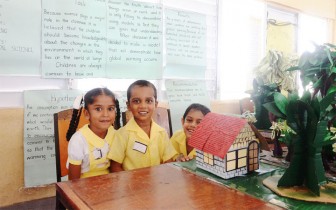“Green” products and solutions took centre stage as the Region Four Department of Education’s Science, Technology and Mathematics Fair opened yesterday at the Diamond Secondary School, on the East Bank of Demerara

The two-day event, for nursery, primary, lower secondary and secondary schools in the region, was held under the theme “Science, Mathematics and Technology: Unlocking Potentials for Green Societies.”
In keeping with the theme, most schools presented environmentally-friendly projects, including products made from local produce, or in some cases, local waste. There were even a number of nursery and primary schools that focused on applying the concept through Home Economics, displaying foods and items such as vases, tie dyes and penholders that were made from local produce.
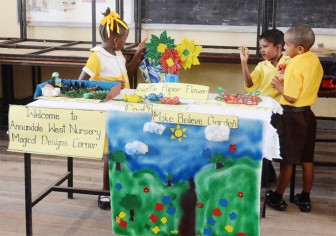
Among the initiatives showcased at the nursery level was the Plaisance Dorcas Club Nursery’s green house, on which pupil Aaniyah Matthews gave an explanation. Three bold students of North Vryheid’s Lust Nursery, meanwhile, took the time to talk about their Global Warming and Deforestation project.
Pupils from Craig Primary School displayed a solar panel water heater that can be used in homes. An excited Marina De Freitas said that the project is an environmentally-friendly creation.
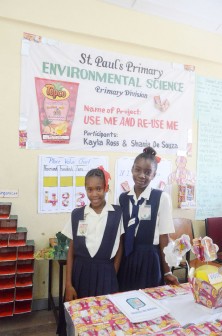
A number of coconut products such as sugar cakes, oil, bread and biscuits were also showcased by schools. Students of Supply Primary along with other schools showed the many ways that coconut can be used. The school’s projects included a coconut vase adorned with nenwah flowers, penholders and even a coconut diya.
The teachers and pupils of Diamond Primary similarly focused on the variety of ways to use the cucumber. The school’s presentation included baked cucumber, a cucumber and lemon spritzer drink and a cucumber cocktail. When asked about the genesis of the cucumber spritzer and the cocktail, Ms. Forde, a teacher from the school, stated that the students were interested in making a drink out of cucumber and the teachers helped them run with the idea.
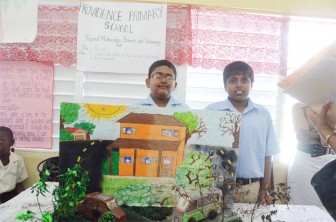
There was sparse participation among secondary-level schools. Among those showcasing exhibits, Diamond Secondary and Bladen Hall Multilateral displayed had two of the more interesting projects.
Students of Diamond Secondary showed how organic waste, such as rotten fruit and vegetables, could be used to create methane gas. Their project, “Anaerobic Digestion,” illustrated how the gas, which is used for cooking, can be created with the use of three sealed plastic buckets, pipelines and hose.

Sasha Dhanraj and Rishauna Wilson explained that the process is very simple since it only requires the organic wastes to be broken down into gas, which is collected at the end of the process. The students said that they worked in groups after school, during breaks and at lunch time to create the project, which took about two weeks to complete. Despite this, they explained that it was an enjoyable and exciting experience, since they are concerned about environmental-friendly practices.
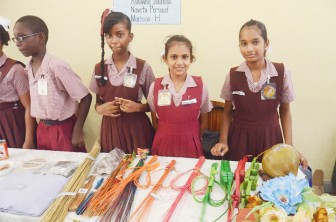
The students of Bladen Hall Multilateral, meanwhile, looked at disposing of household garbage in an environmental-friendly way. The project was focused on finding alternative use for waste, such as plastics, paper and food products, which can be recycled or used to create organic manure. Their project, which took about three weeks to complete, was inspired by the garbage situation in the capital, according to Nandeo Persaud, Head of the Science Department at the school.
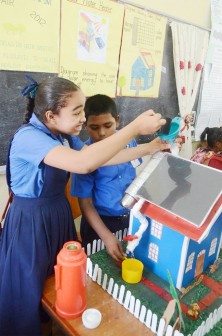
The fair continues today at the
venue, between 9am and 4pm.
